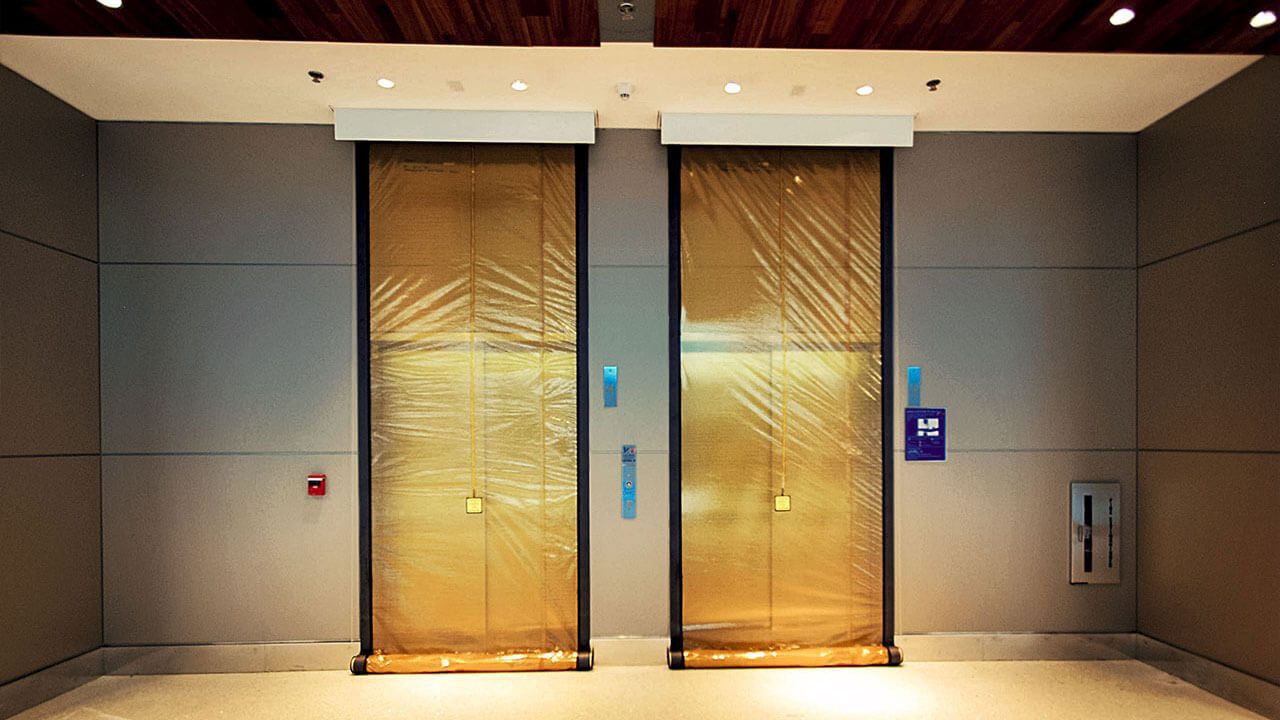
Being ready for a fire is important even if you can’t completely avoid one. Being prepared keeps you safe, helps you leave quickly, and protects your things from being ruined. In this article, we examine how smoke curtains can help with this.
What Are Smoke Curtains?
Smoke curtains are special systems in buildings that stop smoke and fire from spreading. They are like walls that block smoke and fire from moving to other areas.
Smoke curtains can be put up in hallways and big open spaces to help people leave safely. They can be pulled up high so they don’t block exits, or they can be lowered to make a solid wall.
You can use both smoke and fire curtains at the same time. They are kept in a box high up and only come down when an alarm tells them to.
Here are the benefits and shortcomings of smoke curtains:
| How Smoke Curtains Help | Problems with Smoke Curtains |
| Stop smoke and fire from spreading | Cost: can be expensive |
| Make it easier to see during a fire | Maintenance: need regular checks and fixes |
| Protect people and things | Not enough by themselves |
| Save lives and lessen damage | False alarms: can be triggered accidentally |
| Can be a part of overall fire safety plan | Offer limited protection: don’t prevent fires |
What materials are used for smoke curtains?
Smoke curtains are created using fire-resistant materials like E-glass and fiberglass fabrics. These fabrics are made of glass fiber strands that don’t break down, shrink, stretch, or lose color over time, and they don’t catch fire.
The thin fibers can be twisted into threads and woven in various ways to create different levels of strength and flexibility, making them ideal for smoke curtains that can be hidden easily.
How are they different from fire curtains?
Fire curtains and smoke curtains might look and work similarly, but they serve different purposes.
A fire curtain aims to stop the fire from spreading, while a smoke curtain’s goal is to manage smoke movement.
Fire curtains and fire protection systems work together to make barriers where there are no walls. When activated by the smoke control system, they close off openings of all sizes, stopping fire and smoke from moving to other areas. Conversely, smoke curtains are part of a smoke control system that either blocks smoke from entering another zone or directs it along a specific path. Smoke curtains don’t go all the way down to the floor; they are generally placed above head height to avoid obstructing escape routes.
It’s essential to remember that fire curtains can help control smoke, but their main function is to prevent fire spread. They are usually used to safeguard an open staircase or to stop the fire from moving between floors through an open atrium. In contrast, smoke curtains help keep the smoke layer at a higher temperature, which allows the smoke to rise to points where it can be removed.
So the main difference between fire curtains and smoke curtains lies in their intended purpose. Fire curtains focus on stopping fire spread, while smoke curtains concentrate on controlling smoke movement.
What are the different types of smoke curtains available in the market?
Various kinds of smoke curtains can be found in the market, each made for particular uses.
The four main types of smoke curtains are elevator, vertical, draft, and perimeter.
Elevator smoke curtains go in elevator shafts to stop smoke from getting into the elevator and spreading between floors. Vertical smoke curtains help make smoke compartments in big open areas, like atriums. Draft smoke curtains are put in doorways and other openings to stop smoke from moving to other parts of the building. Perimeter smoke curtains go around the building’s edge to stop smoke from coming in or going out.
For more information, visit a1sgroup.com






